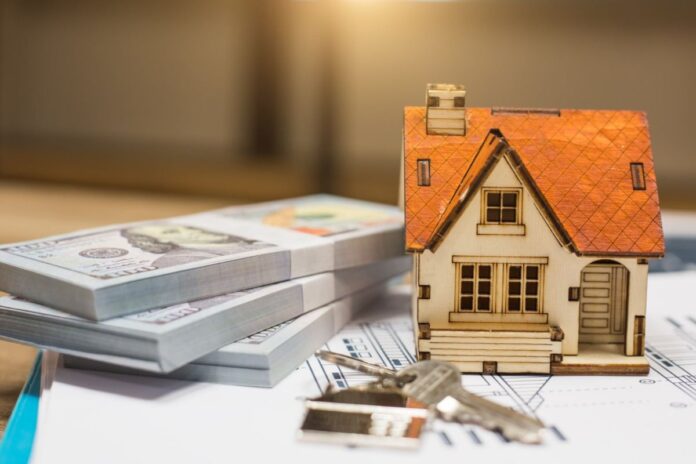Real estate has consistently proved to be one of the most valuable investments around. Among its many benefits is the fact that there are plenty of ways to make money in real estate. You can adopt a fix and flip strategy. You can become a property developer. One of the more popular strategies is known as ‘buy and hold’.
A buy and hold strategy involves purchasing already developed properties with the goal of holding on to them for a substantial amount of time. It is a long-term strategy designed to earn healthy returns that will pay off big at some point in the future. However, buy and hold does not eliminate short term gains. If an investor chooses the right kinds of properties and gradually builds a portfolio, those properties can generate both short- and long-term returns.
Here are the main advantages of buy and hold real estate investing:

It Generates Passive Income
In almost every buy and hold case, the investor is looking at an already developed piece of property with a rented structure on it. Keeping the structure rented means generating passive income by way of monthly rental payments. This generates both short term returns and monthly income that can go toward paying off the loan obtained to buy the property.
Consider the alternative: purchasing a piece of empty land and holding it while it appreciates over ten years. Both scenarios generate long-term returns at the time of sale. But purchasing a property with rental value generates monthly income for as long as it is held by the investor.
The Investor Also Builds Equity
Having a viable structure on a piece of land adds to its value. When that structure is rentable, like an office building or multi-building apartment complex, the investor has the added advantage of equity. Equity is realized in both the value of the property itself and the amount of rental income it generates.
Just as with buying a house, time increases equity. As an investor pays off the financing used to obtain the property, the value of the property actually climbs. Meanwhile, rental rates steadily rise from one year to the next. The investor is gradually building equity through both channels.

Buy and Hold is Easier to Finance
Buy and hold investments tend to be easier to finance than other types of real estate deals. At the very least, hard money lenders appreciate buy and hold transactions due to the previously mentioned passive income and equity potential. Buy and hold deals are not a hard sell when it comes to hard money.
Actium Partners is a hard money lender based in Salt Lake City, UT. They also write loans in Colorado and Idaho. They say the key to obtaining a hard money loan is the collateral a borrower offers. It turns out that collateral does not get much better than a piece of property with high rental value.
Appreciation Is the Natural Order of Things
Finally, appreciation is the natural order of things in commercial real estate. Property values may dip here and there, but over time, they almost always appreciate. Buy and hold is built on that premise. You reap short term returns on passive income and long term returns when you sell. If the value of a property increases enough, the eventual sale could reap a windfall.
There are lots of ways to make money in real estate. Buy and hold is a preferred strategy because it offers so much. Think about it before you start putting money into property.

Long-Term Market Stability
Real estate markets, unlike stock markets, tend to exhibit more stability over the long term. This stability is a significant advantage of the buy and hold strategy. While real estate prices can fluctuate, they generally don’t experience the same level of volatility as stocks or other investments. This stability provides a sense of security for investors, knowing that their investment is not likely to lose substantial value overnight. Additionally, in times of economic downturn, real estate often retains its value better than other assets, making it a safer bet for long-term growth.
Tax Benefits
Buy and hold real estate investors can take advantage of various tax deductions. These deductions can include mortgage interest, property tax, operating expenses, depreciation, and repairs. The depreciation expense, in particular, can be a significant tax advantage. It allows the investor to write off the cost of the property over its useful life, providing annual tax savings. These tax benefits can significantly enhance the overall return on investment by reducing the tax burden on rental income and capital gains.
Investing in a house and lot for sale offers not only the potential for long-term capital appreciation but also these valuable tax advantages. Mortgage interest and property tax deductions can significantly reduce your taxable income, putting more money back in your pocket. Operating expenses, such as property management and maintenance, can also be deducted, further increasing your potential tax savings. This not only reduces your taxable income but also incentivizes property upkeep, ensuring that your investment remains in good condition.

Leverage in Investment
Leveraging is a powerful tool in buy and hold real estate investing. Investors can use borrowed capital to increase the potential return of an investment. For example, with a 20% down payment, an investor can own and control a 100% property investment. This leverage allows investors to acquire more valuable properties or multiple properties, increasing their potential for higher returns and diversification of their investment portfolio.
Diversification of Investment Portfolio
Real estate investment is a great way to diversify an investment portfolio. Unlike stocks and bonds, which are subject to market fluctuations, real estate has a low correlation with other major asset classes. This means that when stocks are down, real estate may not be as severely affected. By diversifying into real estate, investors can reduce overall portfolio risk and improve returns over the long term.

Inflation Hedging
Real estate investment is often considered a hedge against inflation. As inflation increases, so do property values and rental incomes. This increase can protect investors from the eroding effects of inflation on their investment capital. In an inflationary environment, the value of the real estate and the income it generates can rise in tandem with the inflation rate, preserving the purchasing power of the investor’s capital.
Potential for Property Development and Improvement
Buy and hold investors have the opportunity to add value to their properties through improvements and development. By renovating or upgrading a property, investors can increase its rental income potential and overall value. This aspect of real estate investing allows for creative control and the ability to directly impact the investment’s performance.

Community Development and Personal Satisfaction
Investing in real estate also offers a sense of personal satisfaction and contribution to community development. By maintaining and improving properties, investors can positively impact the neighborhoods in which they invest. This improvement can lead to better living conditions for tenants and an enhanced sense of community. Additionally, real estate investors often feel a sense of pride in owning tangible assets that contribute to the housing market and local economy.
In conclusion, buy and hold real estate investing offers a multitude of advantages including passive income, equity building, ease of financing, appreciation, market stability, tax benefits, leverage opportunities, portfolio diversification, inflation hedging, property development potential, and personal satisfaction through community impact. These factors make it a highly attractive investment strategy for those looking to build long-term wealth.









